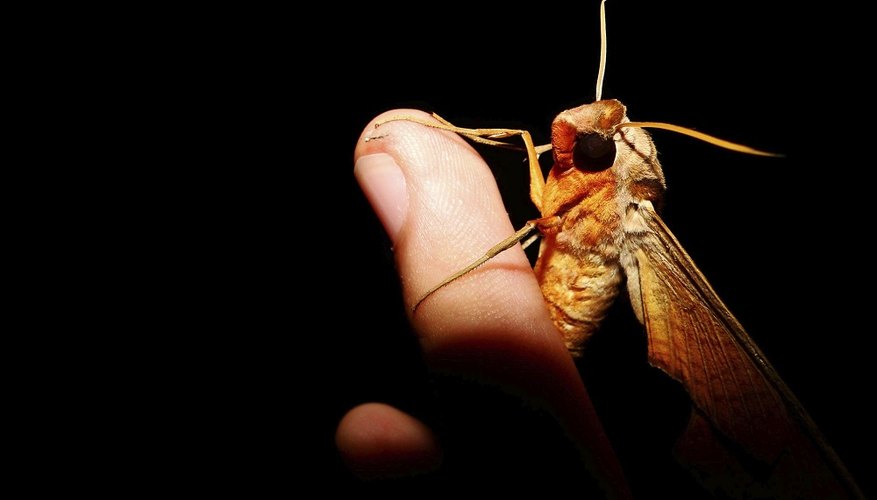At night, the back garden comes alive with flying insects not seen during the day. These nocturnal insects prefer to hunt and fly after nightfall to avoid predators. Street lights and porch lights attract the flying insects, confusing their internal navigation systems. Some are pests, while others help out in the nighttime garden.
Mosquitoes
Most of the more than 200 varieties of mosquitoes are most active from just before sundown to just before sunrise. Their most active period was the two hours after sundown according to a 2007 study. The study concluded that humans are most likely to be bitten by mosquitoes at night. Mosquitoes can transmit diseases such as Malaria and the West Nile Virus. Its most common predator is the nocturnal mammal, the bat.
- Most of the more than 200 varieties of mosquitoes are most active from just before sundown to just before sunrise.
- Their most active period was the two hours after sundown according to a 2007 study.
Moths
Moths come in all sizes and colours. The Luna Moth is a pale green with white spots encircled with yellow and maroon bands. The Giant Leopard moth is white with black rings and more than 7.5 cm/3 inches in length. The moth serves an important role in the garden as it flits from flower to flower, pollinating the night-time blooms.
- Moths come in all sizes and colours.
- The Luna Moth is a pale green with white spots encircled with yellow and maroon bands.
Carabid Beetle
The Carabid or ground beetle spends its night looking for food. There are more than 2,200 different varieties of this beetle. They are fast runners and excellent diggers. For about 10 days to two weeks every year, the beetle takes flight to attract a mate.
- The Carabid or ground beetle spends its night looking for food.
- For about 10 days to two weeks every year, the beetle takes flight to attract a mate.
Lightning Bug/Firefly
The Lightning Bug or Firefly is known for its luminescent abdominal section that glows once it becomes dark. It's a signal to attract the other sex to the firefly. The biochemical industry collects fireflies for its luciferin, the organic compound that enables the bug to glow. It is also a carnivore, eating other insects including insect larvae, snails and other fireflies.
- The Lightning Bug or Firefly is known for its luminescent abdominal section that glows once it becomes dark.
- The biochemical industry collects fireflies for its luciferin, the organic compound that enables the bug to glow.
